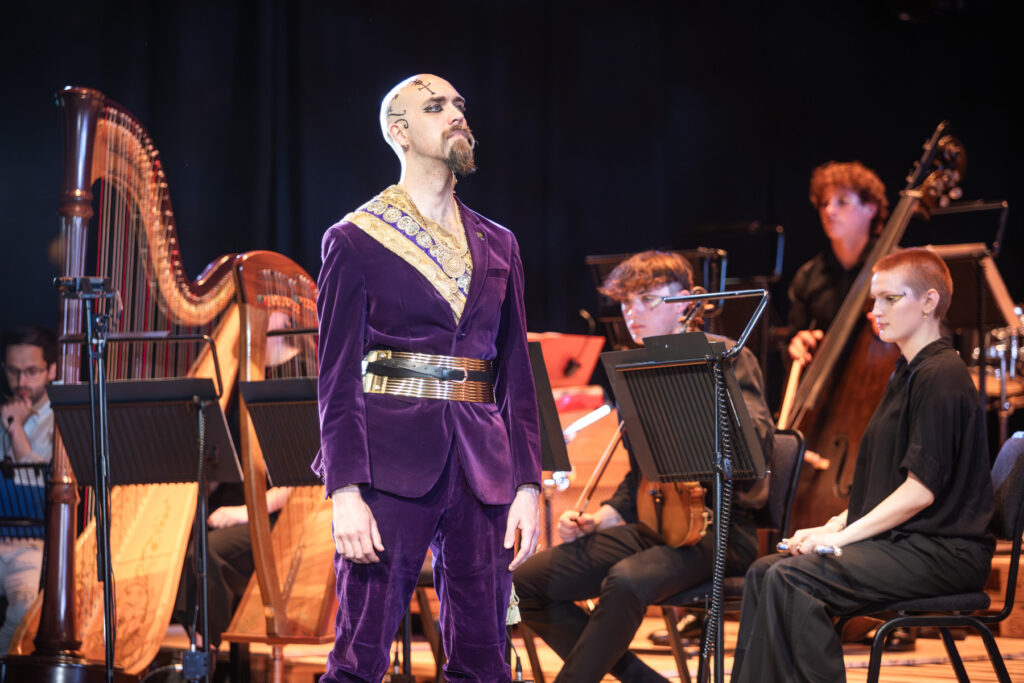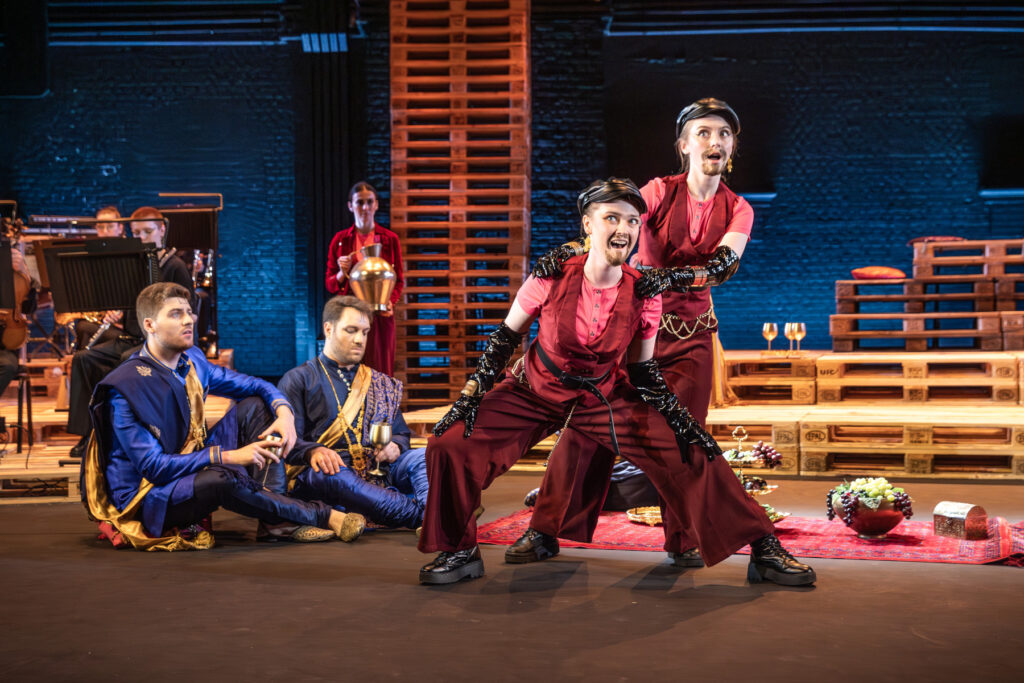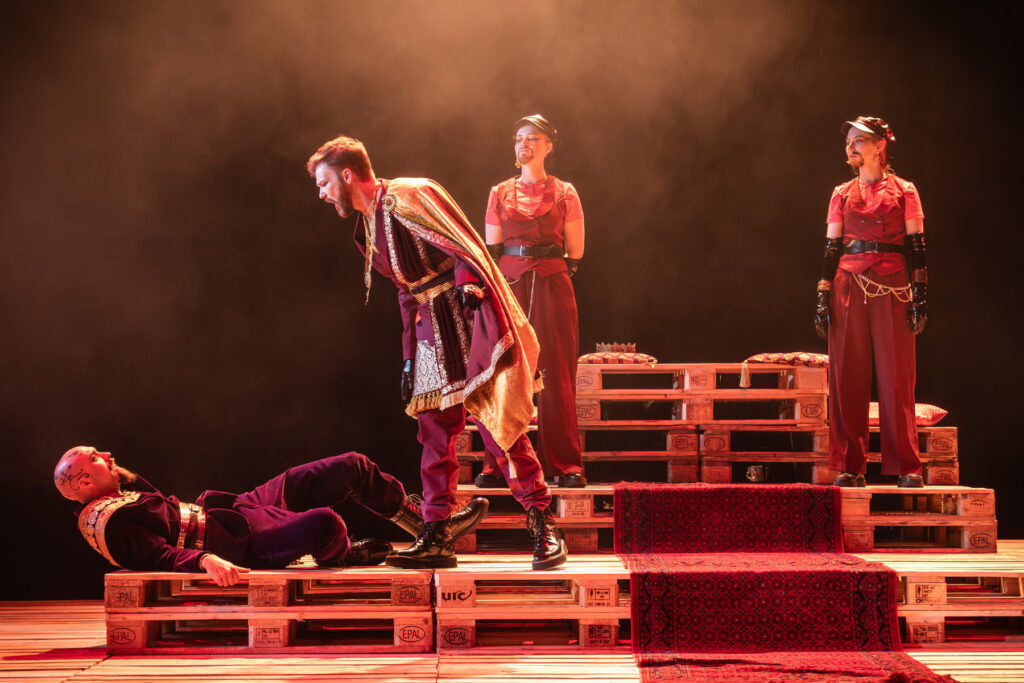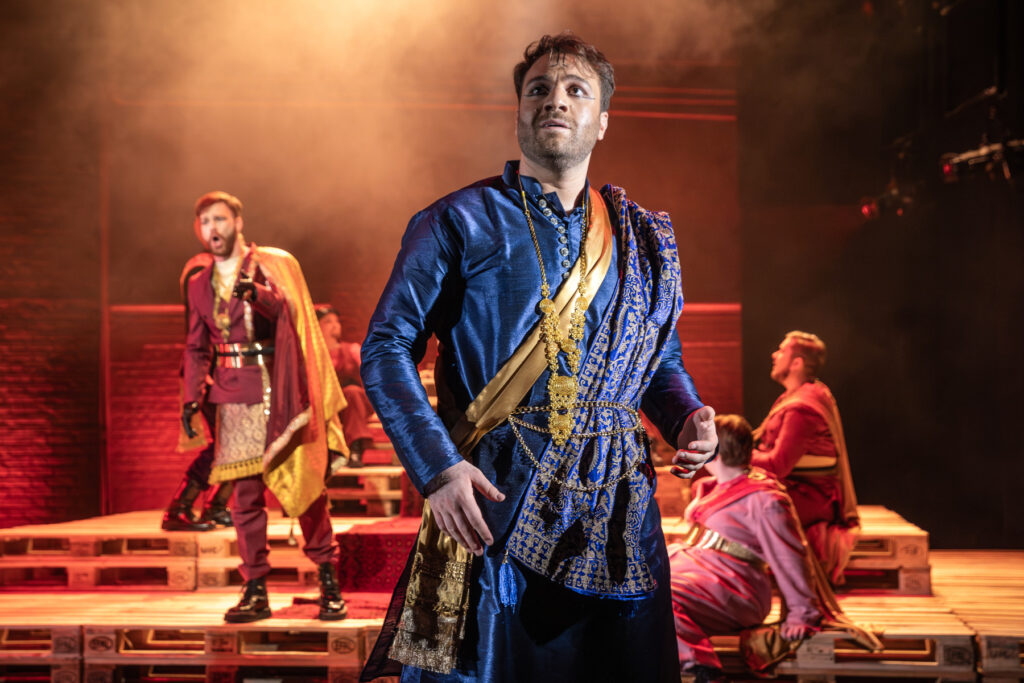The Burning Fiery Furnace (1966) is the second of Britten’s Church Parables, based on an episode from the Book of Daniel in the Old Testament. Its immediate literary inspiration is the tradition of the mediaeval mystery plays, in which the stories of the Bible were dramatized as symbolic representations of various aspects of the Christian faith – in this case the ‘burning trial’ of faith itself. Practising Anglicans will also recall that the Benedicite canticle, sometimes used in the Prayer Book service of Matins, comes from the same scriptural source, and parts of it are quoted in Britten’s work; there’s also a charming setting of that by Purcell, which he probably knew.

The eclectic range of other influences which Britten drew upon – Japanese Nō theatre, the timbres of Far Eastern music, the free rhythm and melodic contours of Christian plainsong, as well as the episode’s origins in the pre-Christian Apocalyptic Jewish scriptures – is the ideal riposte to the near tragedy of the story itself. Three Israelite sages (Ananias, Misael, and Azarias) come to the notice of King Nebuchadnezzar and are appointed as governors in his kingdom (where they are made to adopt Babylonian names). But they encounter suspicion and hatred as foreigners, and are punished for not conforming with Babylonian pagan customs. There’s a grim irony that this performance comes at a moment of increasing tension in the national political debate about immigration and its supposed affect upon this ‘island of strangers’, never mind the situation in Israel, where Gazans are now the modern-day counterparts of the three vilified and harassed ministers.

Victoria Newlyn’s production for the Royal Academy of Music presents the drama as a play within a play, and so preserves an essentially Oriental visual character without having to make apology for cultural appropriation. The ensemble of eight instrumentalists and conductor Christoper White are integrated in the action as they perform on a dais of wooden crates, alongside the similar platform upon which Nebuchadnezzar’s throne is situated. As a wooden structure, that seems to presage the pyre that would feed the flames of the furnace into which the three protagonists are cast. Britten’s score delineates the narrative’s mood and characters, not as a Wagnerian drama though the development of leitmotifs, but in the juxtaposition and contrast of sonorities and textures, which White diligently steers through in an often tense, raw succession that evokes the percussive aura of the gamelan.

The connection between the ensemble players and the vocal cast is further brought out by having the Babylonian leader of the Courtiers flit around the former as he enumerates the musical instruments which will be used in the raucous worship of the god Marduk, as though enlisting them in his goading of the Jewish ministers into a practice he knows they won’t be able to comply with. Once the power of the Jewish God is manifested in the angelic figure who appears in the midst of the furnace and the salvation of the three sages, the musicians are brought over to greet the reunited singers in an act of communal solidarity, bridging music and drama, and overcoming the fear of cultural and national differences between the Jews and Babylonians. That solidarity is realised above all in the music, in the cast’s singing of the Latin plainsong that Britten wrote to frame the drama at its beginning and end. Here it’s conceived as an arc in each case, rising in ardour before falling away, very much like the processional and recessional plainsong which bookends the Ceremony of Carols.

Fionn Ó hAlmhain gives a strenuous, even threatening account of the Abbot who leads the gathering at the start, as they prepare the retelling of that Biblical drama, in which he them assumes the part of Nebuchadnezzar’s Astrologer. Owen Lucas’s exemplary diction eloquently expresses the king’s authority without needing to impose additional heft to the role. Tom Butler is an excitable, clarion-voiced Herald and Leader of the Courtiers, yielding to defeat when Nebuchadnezzar recognises the superior power of the Jewish God. The three sages blend well in their steadfast devotion to that deity, though Konstantinos Akritides’s Misael stands out for his particularly urgent characterisation. By contrast the female Courtiers and Entertainers provide an energetic and winning cabaret-style satire upon the sybaritic customs of the Babylonian court to which they belong, offering welcome self-deprecating humour in an otherwise earnest and solemn sacred drama. The result is a forging together by all the performers here of the work’s disparate elements into a coherent and powerful vision of religious conversion and cultural accord.
Curtis Rogers
The Burning Fiery Furnace
Composer: Benjamin Britten
Libretto: William Plomer
Cast and production staff:
Nebuchadnezzar – Owen Lucas; Astrologer (Abbot) – Fionn Ó hAlmhain; Ananias (Shadrack) – Harrison Robb; Misael (Meshach) – Konstantinos Akritides; Azarias (Abednego) – Theodore McAlindon; Herald and Leader of the Courtiers – Tom Butler; Courtiers – Charlotte Clapperton, Ella Orehek-Coddington & Zixin Tang; Entertainers/Attendants – Caroline Blair & Abigail Sinclair; Angel – Grace Hope-Gill
Director – Victoria Newlyn; Costume Designer – Michelle Bradbury; Lighting Designer – Simon Corder; Conductor – Christopher White, Royal Academy Sinfonia
Royal Academy of Music, London, UK, 14 May 2025
Top image: Owen Lucas as Nebuchadnezzar, with the Leader and Courtiers
All photos by Craig Fuller.